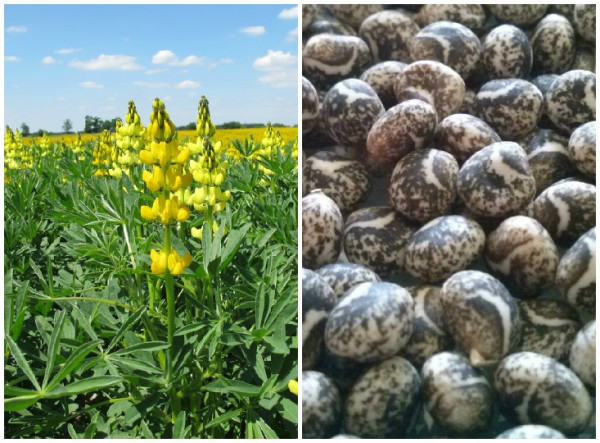YELLOW LUPIN
Yellow lupin, a member of the legume family, is mainly grown for seed or green mass, utilized as animal feed. It is also sown in autumn as an after-crop for plowing-over. Yellow lupin provide a highly nutritious forage. Its seed, contain as much as 42-45% protein, and after grinding it can be fed to all livestock. At present, all varieties of yellow lupin registered in Poland are low tannin content varieties (alkaloids at 0,1%) which makes them sweet lupin varieties.
Yellow lupin prefers light soils and does not tolerate high calcium levels. It thrives on slightly acidic soils. The a deep tap-root reaching down as low as 2 meters deep allows yellow lupin to absorb water and nutrients from deeper soil layers, and renders the plant more resistant to draught. An additional feature of legumes, including yellow lupin, is their symbiosis with Rhyzobium bacteria, binding nitrogen form the air. This makes the lupin plantation self-sufficient in terms of nitrogen fertilization.
Yellow lupin is a first-rate fore-crop for all other plants in the crop rotation, it leaves ample organic matter and assimilated nitrogen.







